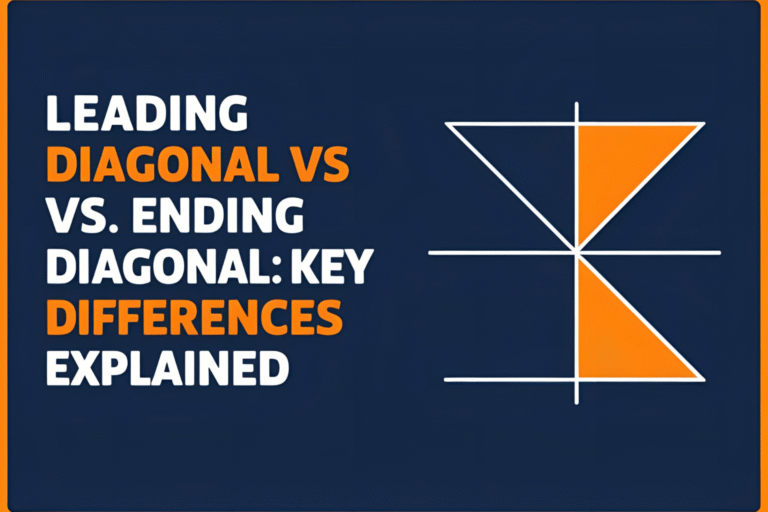13 Elliott Wave Patterns Explained with Chart Examples
Elliott Wave Theory is built around recurring market patterns. While the 5-3 wave structure is the core, there are 13 unique Elliott Wave patterns that traders should recognize.
In this guide, we’ll break down each pattern—impulsive and corrective—with clear explanations and chart references.
1. Impulse (Motive) Wave
- 5-wave move in the trend’s direction
- Structure: 5-3-5-3-5
- Most common in strong trends
2. Leading Diagonal
- Appears in Wave 1 or A
- Structure: 5 overlapping waves
- Wedges inward like a triangle
3. Ending Diagonal
- Appears in Wave 5 or C
- Structure: 5 overlapping waves
- Signals trend exhaustion
4. Zigzag (Simple Correction)
- Structure: 5-3-5
- Sharp countertrend move
- A-B-C formation, often deep retracement
5. Double Zigzag
- Structure: 5-3-5 x 2 (joined by ‘X’ wave)
- More complex version of zigzag
- Creates extended correction
6. Triple Zigzag
- 3 zigzags connected by two ‘X’ waves
- Rare but very complex correction
- Often seen in volatile markets
7. Flat
- Structure: 3-3-5
- Wave B retraces almost 100% of Wave A
- Wave C is strong and often extends
8. Expanded Flat
- Wave B exceeds the start of Wave A
- Wave C ends well beyond Wave A
- Signals volatility and shakeouts
9. Running Flat
- Wave B ends beyond the origin of Wave A
- Wave C is short and does not reach the end of Wave A
- Indicates a strong trend continuation
10. Triangle
- Five waves labeled A-B-C-D-E
- Structure: 3-3-3-3-3
- Appears in Wave 4 or B
- Consolidation before trend continuation
11. Contracting Triangle
- Most common triangle shape
- Trendlines converge
- Range tightens over time
12. Expanding Triangle
- Trendlines diverge
- Shows extreme indecision or volatility
- Rare but important pattern
13. Combination (Complex Correction)
- Multiple corrections chained together (zigzag + flat, etc.)
- Labeled W-X-Y or W-X-Y-X-Z
- Requires skill to analyze
Why These Patterns Matter
- Help determine market direction and entry/exit points
- Allow accurate wave labeling
- Improve overall timing of trades
- Recognizing patterns can prevent false trades and overtrading
How to Practice Identifying Patterns
- Study historical charts on multiple timeframes
- Use labeling tools on platforms like TradingView
- Keep a reference sheet of all 13 patterns
- Focus first on impulse, zigzag, and triangle patterns before mastering the rest
Conclusion
Mastering these 13 Elliott Wave patterns gives you a strong edge in reading the market. Whether you’re spotting an impulse trend or a corrective triangle, each pattern tells a story about investor psychology and future price movement.
Understanding their structure, sequence, and context is key to accurate Elliott Wave analysis.
FAQs
How many Elliott Wave patterns are there?
There are 13 recognized wave patterns—both impulse and corrective types.
Which Elliott Wave pattern is the most common?
Impulse waves and zigzag corrections are the most frequently seen patterns.
What’s the hardest pattern to identify?
Complex corrections like double zigzags and combinations can be difficult for beginners.
Are triangles always corrective?
Yes, triangles occur in corrective phases—typically in Wave 4 or B.
Do I need all 13 patterns to trade effectively?
Not necessarily. Focus first on the basic ones—impulse, zigzag, and flat patterns.





